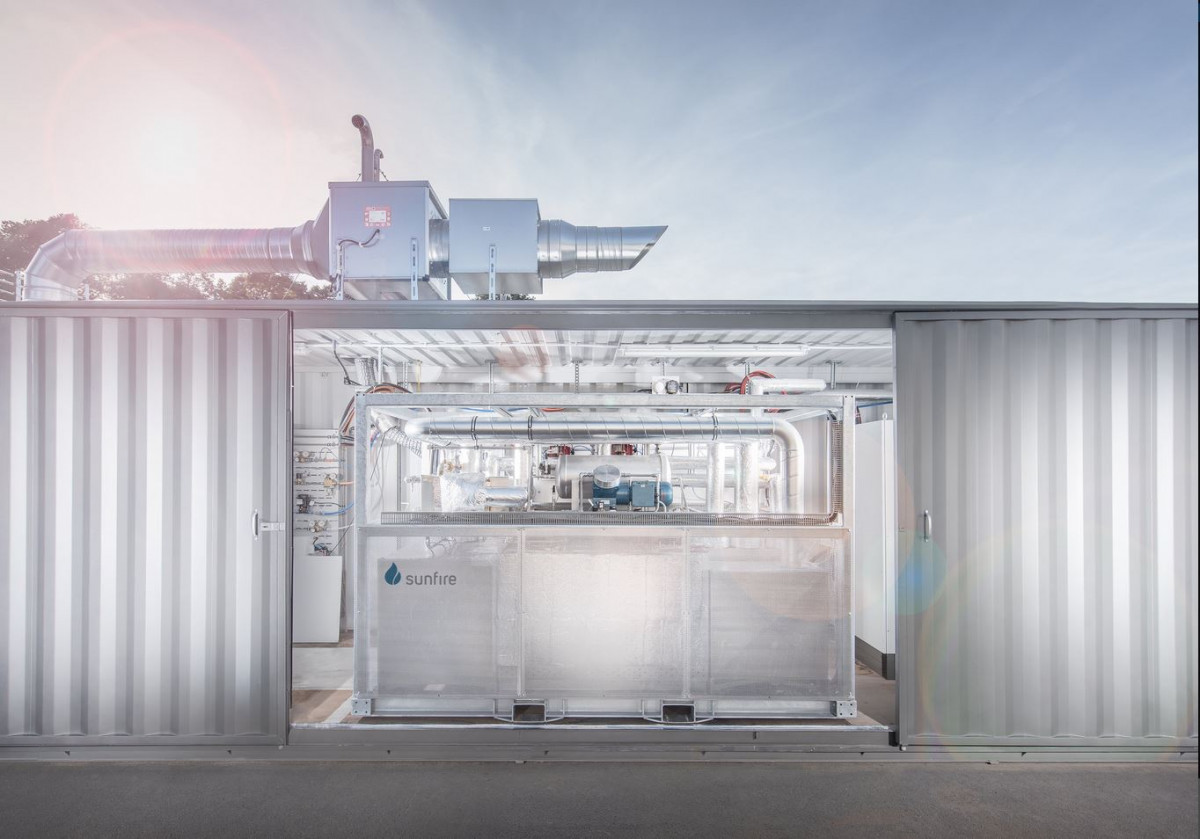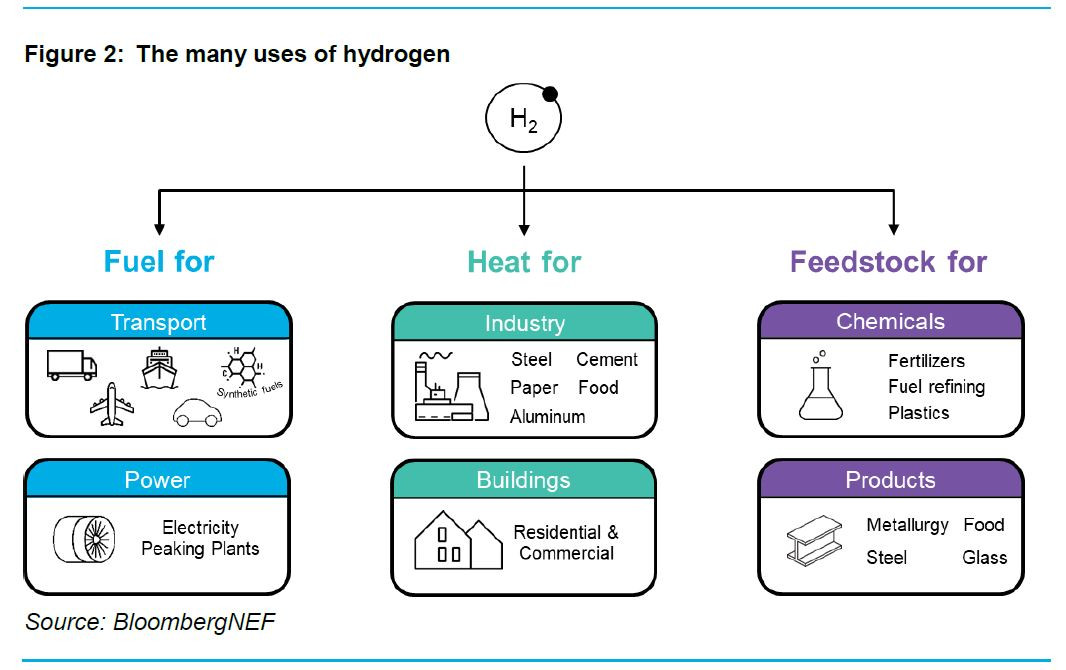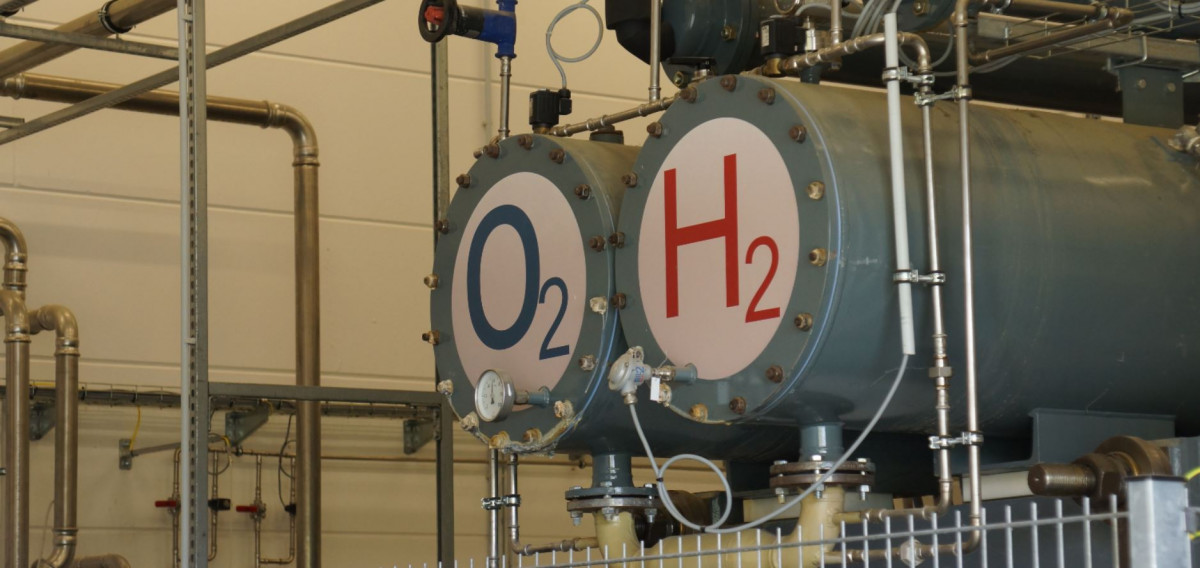German hydrogen strategy aims for global leadership in energy transition
Please note: The factsheet Germany's national hydrogen strategy provides a summary of the strategy, which is also available in English.
Germany’s government has agreed on a national hydrogen strategy with a controversial focus on hydrogen made with renewable energies to boost its landmark energy transition and conquer future markets for its famed industry.
Following months of delays, the highly anticipated strategy was approved by ministers on 10 June. The paper says "only hydrogen produced on the basis of renewable energies ('green' hydrogen) is sustainable in the long term." Hydrogen made with natural gas using carbon capture and storage (CCS), which is highly controversial in Germany, is only to be used "on a transitional basis."
In the fight against climate change, hydrogen made with renewable electricity is increasingly seen as a silver bullet for sectors with particularly stubborn emissions, such as heavy industry and aviation. Germany, which has set itself the target of becoming climate neutral by mid-century, has set out to become a global leader in the associated hydrogen technologies - not only to launch the next stages of its landmark energy transition, but also to secure a promising growth market for its internationally reputed industry.
The strategy is a "quantum leap" that will lift the energy transition and climate protection to a "new qualitative level," according to the country's economy and energy minister Peter Altmaier. During a press conference marking the launch of the strategy, he called the initiative the "most important innovation since our decision to support the roll-out of renewables."
Research minister Anja Karliczek said the whole world was waking up to the opportunities presented by green hydrogen technologies. "Building a global hydrogen economy offers enormous potential for German plant manufacturers," Karliczek said. Environment minister Svenja Schulze said hydrogen is the "energy of the future" that will give a "double boost" to the climate and jobs. "Above all, we will sell the technology – we're really good at that in Germany," Schulze told public broadcaster ARD.
"A new chapter"
"The national hydrogen strategy opens a new chapter for climate protection," said Andreas Kuhlmann, head of Germany's energy agency (dena). "The national hydrogen strategy is the long-awaited basis for the continued success of the energy transition, and also for the long-term attainability of climate targets."
Industry lobby group BDI said it "creates the prerequisites for an energy transition that more closely intermeshes industrial and climate policy," but criticised the government missed the chance to use transport's potential for the hydrogen roll-out.
Whether to use hydrogen to power cars and heating systems remained one of the most controversial aspects of the strategy following its publication. Several NGOs called for limiting its use in the transport sector to vehicles that cannot be powered directly by electricity, such as many ships and planes. They warned against using hydrogen in cars or in the heating sector given that more efficient alternatives were available for these applications.
The chemical industry association VCI also called the strategy a "decisive step for the success of the energy transition," but urged the government to take into account all available low-emission forms of making hydrogen, including those using natural gas and CCS.
In contrast, most NGOs welcomed the strategy's focus on "green" hydrogen. “Germany’s hydrogen strategy shows that one of the world’s largest fossil gas consumers is preparing for a future without it," Felix Heilmann, researcher at climate think tank E3G, told Clean Energy Wire. "The government’s recognition that only green hydrogen from renewable sources is sustainable reduces the long term risk of fossil gas surviving through the back door."
Kai Niebert from environmental NGO umbrella organisation DNR said "only green hydrogen is good hydrogen." But Friends of the Earth Germany (BUND) warned the strategy would lead Germany into a dead end. The plan "does not serve the goal of leading Germany to a climate-neutral energy supply as quickly as possible. It perpetuates high energy consumption by ignoring central requirements for energy saving and energy efficiency, and thus leads the country into a high import dependence," BUND said.
Silver bullet?
A rapidly growing number of countries striving for climate-neutrality have placed large bets on hydrogen made with renewable electricity to reduce emissions in industries where it is most difficult. But producing the extremely energy-rich gas requires huge amounts of electricity, making it more expensive than conventional fuels. This is why decisive government action is needed to kick-start what is increasingly referred to as an international "hydrogen economy”.
A lion’s share of current greenhouse gas emissions can be avoided by increasing efficiency, and by replacing fossil fuels with clean electricity directly – for example, using electric cars instead of combustion-engine models. But there are a number of activities where this approach doesn't work. For example, there is no technology on the horizon that could enable to power large planes and ships with batteries, because they are much too heavy. This strategy will also fail in many industrial sectors – for example, chemicals or steelmaking, where entirely new production methods are required because current processes cause unavoidable CO2 emissions. Here green hydrogen made in electrolysers has emerged as the leading candidate to deliver the deep emission cuts needed to achieve carbon-neutrality.
Coinciding with the strategy, German steelmaker thyssenkrupp said it had expanded its production capacities for water electrolysis to make green hydrogen to the gigawatt scale. “Many countries around the world are currently planning to enter the hydrogen economy. Water electrolysis is increasingly emerging as a key technology for building a sustainable, flexible energy system and carbon-free industry. This opens up new markets for us,” said Sami Pelkonen, CEO of thyssenkrupp’s Chemical & Process Technologies business unit.
Strategy eyes 200-fold increase in electrolyser capacity
The strategy says Germany aims to build up industrial hydrogen generation facilities with a capacity of 5 gigawatts (GW) by 2030, including the necessary onshore and offshore renewable energy supply, roughly equivalent to five nuclear power stations or large coal-fired plants. This is to be raised by another 5GW by 2035 or 2040 at the latest.
The energy agency's Kuhlmann called a capacity of 5 GW by 2030 a "good first target," adding this represented increasing current capacities 200 times.
The strategy says Germany will provide 7 billion euros for the ramp-up of hydrogen technologies, in addition to existing support programmes. An additional 2 billion euros will be invested in setting up large-scale hydrogen production plants “Made in Germany” in partner countries. Germany is set to import large quantities of green hydrogen in the future, because the country simply doesn't have enough space to install the massive amounts of renewable energies required to make it.
During the strategy's presentation, the governmnet announced an alliance with Marocco involving the construction of Africa's first industrial scale renewable hydrogen project which will save 100,000 tonnes of CO2 emissions per year.
Kuhlmann said the strategy "is one of the first in the world to go well beyond the end use of hydrogen and includes the entire range of powerfuels." This approach takes into account the opportunities offered by synthetic methane, kerosene, methanol and ammonia, Kuhlmann said. "The National Hydrogen Strategy can thus also be read as a clear commitment to the development of a European market for powerfuels."
A risky bet?
In a commentary for business daily Handelsblatt, Klaus Stratmann wrote that the strategy's signalling effect is significant for the economy and for Europe as a whole, but he warned it was uncertain whether it can be implemented over the coming years and decades. "For the German government has imposed a heavy burden on itself by committing itself entirely to one variant, namely green hydrogen," Stratmann wrote. He argued that huge amounts of renewable power will be needed to make it, and that it is unclear whether Germany will be able to import the necessary amounts. Stratmann says blue hydrogen could pave the way for a hydrogen infrastructure that is increasingly used for green hydrogen. "It is risky not to use this opportunity," he concludes.




